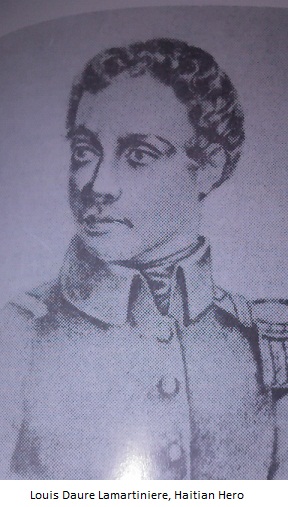CSMS Magazine Staff Writer
He died very young. He was in his twenties, but his bravery had left an everlasting mark on the birth of his country of Haiti. He was the hero of the battle for Crête-à-Pierrot—a legendary fortress along the foothills of the Chaos Mountains near the village of Petite-Rivière in the Artibonite region of Haiti. It was there the French army in Saint-Domingue, Haiti’s pre-independence name, intended to break the backbone of the slave rebellion. Crête-à-Pierrot was built by freed slaves in the early stages of the war for independence and strengthened with redoubt by the British during their occupation of western Haiti.
Dessalines took command of the fortress in March of 1802. Aided by talented officers like Magny, Lamartinière, Monpoint and Larose, he further strengthened it into a virtual citadel with a garrison of 1,500, mostly former slaves. “In his continuing efforts to subdue the rebels, General Leclerc—who headed the Napoleonic expedition to pacify the then French colony—ordered an attack on the redoubt and fortress [led] by 12,000 seasoned troops, veterans of Napoleon’s campaigns in Germany and Italy. Repelled in this attack with the loss of 300 French soldiers and 50 officers, and with the loss of further lives in three additional unsuccessful assaults, Leclerc ordered a siege and continuing cannonade of the fortress. While this continued, hundreds of his troops were killed or died of fever.” (Burton Sellers in Heroes of Haiti)
Indeed it was Louis Daure Lamartinière who took charge of the fort per order of Dessalines, who brook through the French lines in the early stage of the siege on his way to getting reinforcement. The rebels in the fortress resisted for 20 days with little food and water. When the French thought they had the rebels completely surrounded and reduced to helplessness, they ordered their infantry divisions to move to occupy it. What the advancing troops saw had their draws dropped: A young female mulatto wearing a red bonnet, saber at her side, her waist knotted with a scarf and rifle in her hand, circling fearlessly in range on the walls of the redoubt shouting encouragement to the besieged. She was Marie-Jeanne, the wife of Louis Daure Lamartinière, who “fought like a brown Jeanne d’Arc !” as historian Thomas Madiou put it.
Most historians have critically acclaimed Lamartinière as the hero of the Crête-à-Pierrot. The fort was never militarily captured by the French whose number swelled to about 16000 against 1500 indigenous fighters who swore to rather die instead of surrendering to the enemy.
Against all odds, they resisted, until it became clear they had to evacuate. Lamartinière waited in vain for Dessalines to return with relief forces but only an old man, pretending to be an idiot, had worked his way through the French lines, to advise Lamartinière that the fort was to be evacuated that night. Under the cover of darkness, on March 24, 1802, the besieged rebels opened by bayonet a corridor through more than 10,000 French troops. Lamartinière led his soldiers to the hilltop of the Chaos Mountains to meet Jean-Jacques Dessalines who was waiting for him there. Lamartinière’s prowess and bravery earned him a lot of respect among the most distinguished generals in the French rank.
He was a quadroon mulatto from Léogane, a sprawling town about 20 miles south of Port-au-Prince. His blonde hair, blue eyes masked all African lineages he bore in his veins. He could easily be mistaken for a white man. While an officer in the Toussaint’s army in Port-au-Prince, bastion of the Rigaudins and totally devoted to France, Lamartinière was the one who seized control of the arms depot in Port-au-Prince and organized the resistance to the invading army in early 1802. Here is what French general Pamphile de la Croix said of Lamartinière: C’etait un mulâtre quarteron avec le coeur dur d’un africain. (He was a quadroon mulatto with the heart of an african) So today, we honor Louis Daure Lamartinière.
Note: We’re also saying thanks to Rochelet (Tiroro) Guerrier for eloquently answering the question about Lamartinière’s bravery.
Dr. Ardain Isma is editor-in-chief of CSMS Magazine. He teaches Cross-Cultural Studies at the University of North Florida (UNF). He is a scholar as well as a novelist. He may be reached at:publisher@csmsmagazine.org



This a wonderful piece on history.
This a wonderful piece on history.